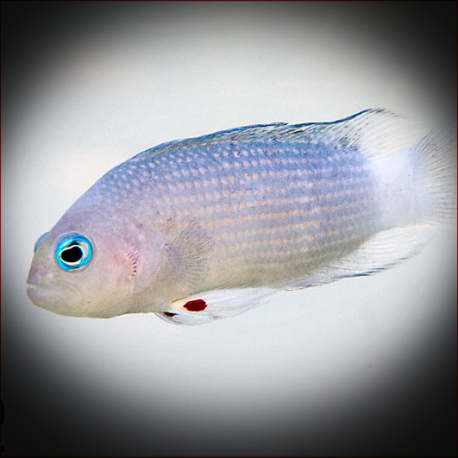More info
Datasheet
| Minimum Tank Size | 150 litres / 39.63 US gallons |
| Maximum Size | 5.0cm / 1.97inches |
| Reef Compatible | Always reef safe |
| Temperament | Aggressive towards other species |
| Temperature | 22.2°C / 71.96°F - 25.6°C / 78.08°F |
| Specific Gravity | 1.020-1.025 |
| Carbonate Hardness | 8-12 |
| pH | 8.1-8.4 |
General Description
The Sabah dottyback, a member of the Pseudochromidae family, comes in two variants, one with a white tail and the other with yellow on the lower body and caudal fin. It is recognized by red spots on the pelvic fins and typically grows up to 5.0cm in size. These fish are known for their vibrant colors and hardiness, making them popular choices for aquariums.
Aquarium Suitability
The Sabah dottyback is considered suitable for most aquariums, but it can be aggressive towards similar species or when not given enough space. They can live as a pair if introduced simultaneously but thrive better without other members of the same species in the tank. These fish jump out of open aquaria, so caution is advised.
Demands, Care, and Hardiness
This species is hardy and can adapt well to aquarium conditions. They require good hiding places, like live rocks, and a varied diet including small crustaceans and zooplankton. Keeping them with fish that eat zooplankton off rocks may lead to competition for food.
Reef Suitability
The Sabah dottyback is reef-safe and can coexist peacefully in a reef setup. They are compatible with reef environments and do not pose a threat to coral or other reef inhabitants.
Aquarium Setup
To set up an aquarium for Sabah dottybacks, a minimum tank size of 150 liters is recommended. Provide plenty of hiding spots among live rocks and ensure a stable temperature between 22.2-25.6°C, pH levels of 8.1-8.4, and a specific gravity of 1.020-1.025.
Behaviour
These fish can exhibit aggressive behavior towards other species and may require space to establish territories. They are known to change gender from female to male within a group, with females transforming when a male is needed.
Feeding and Diet
A varied diet consisting of small crustaceans like krill, mysis, and artemia, as well as zooplankton such as cyclops and pods, is essential for the Sabah dottyback's health and well-being. They must be fed appropriately to thrive in captivity.
Dimorphism and Captive Reproduction
The Sabah dottyback can change gender from female to male, with females transitioning to males as needed within the group. These fish can reproduce in captivity under suitable conditions, with proper care and a well-maintained aquarium environment.
Habitat and Distribution
Native to the Western Pacific, including Indonesia, Malaysia, and the Philippines, the Sabah dottyback is commonly found in reefs and rocky areas. They prefer environments with ample hiding spots and feed on zooplankton found on rocks.

